Growing Beans in a Greenhouse: From Dreaming of Crispy Pods to a Bountiful Harvest

Do you dream of crispy, juicy beans straight from the garden, even when bad weather is raging outside or the first warm days are still far away? Are you tired of tasteless, “plastic” store options and want to be sure of the quality and eco-friendliness of your harvest? If the thought of your own, aromatic pods full of vitamins gives you a gastronomic thrill, then this article is your key to success! Growing beans in a greenhouse is not only possible, but also opens up amazing prospects for every gardener. Let's figure out together how to turn this desire into reality and what secrets will help you collect a truly impressive harvest.
Benefits of Growing Beans in a Greenhouse
Growing beans in protected soil conditions provides gardeners with many advantages:
- Early harvest: In the greenhouse You can sow beans 2-4 weeks earlier than in open ground, which allows you to get the first pods much earlier.
- Extending the fruiting season: Greenhouse conditions allow beans to be harvested until late autumn, and in heated greenhouses, longer fruiting is possible.
- Protection from adverse weather conditions: Plants are reliably protected from recurrent frosts, strong winds, hail and prolonged rains, which can cause serious damage to open-ground plantings.
- Optimal microclimate: In a greenhouse, it is easier to control temperature, humidity and lighting, creating ideal conditions for the growth and development of beans.
- Reduced risk of disease and pest damage: The enclosed space of a greenhouse helps limit the spread of many diseases and the access of pests.
- Higher quality and quantity of harvest: With proper agricultural technology, greenhouse beans often turn out more tender, juicy, without coarse fibers, and the yield can be higher.
- Possibility of growing heat-loving varieties: In a greenhouse, you can successfully cultivate more delicate and heat-demanding varieties of beans that do not grow well in open ground in regions with a cool climate.
Choosing a bean variety for a greenhouse
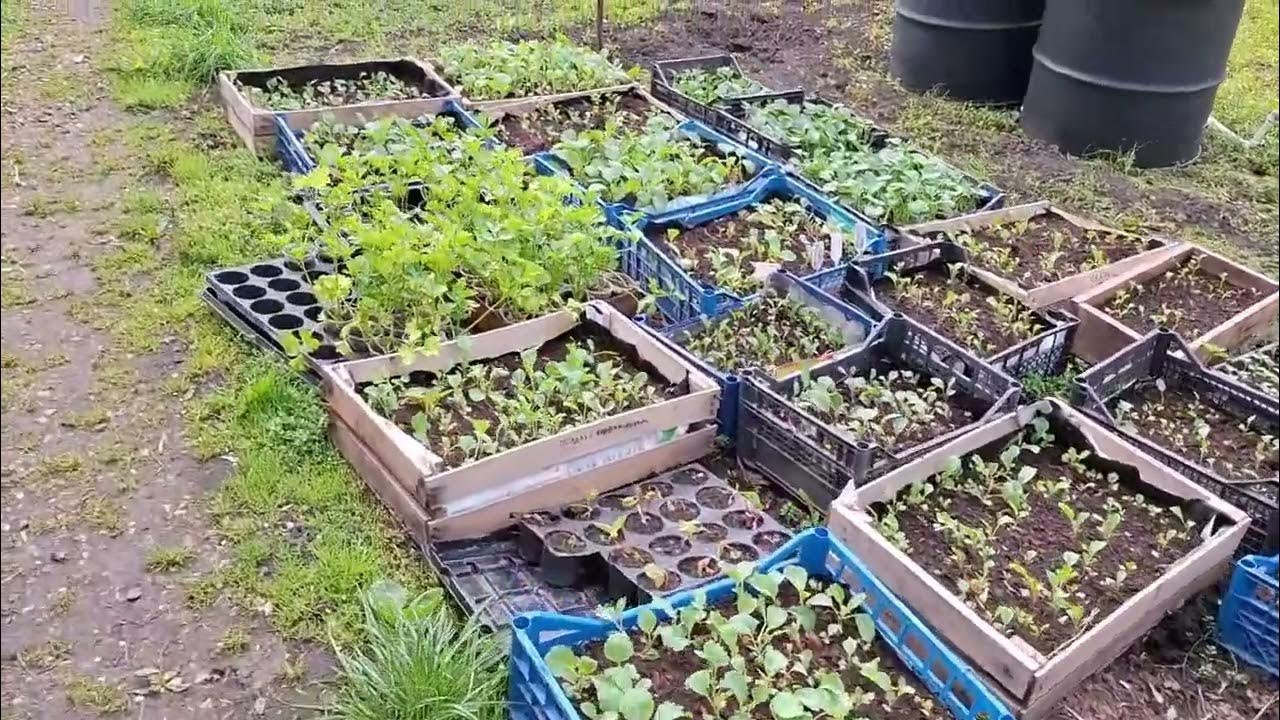
The right choice of variety is one of the key factors for success. The following are best suited for greenhouses:
- Bush varieties: They are compact, do not require complex supports and are easy to care for.
- Early and mid-early varieties: Allow you to get a harvest in a shorter time.
- Disease resistant varieties: Especially to anthracnose, bacterial and viral diseases, which can be a problem in the high humidity conditions of a greenhouse.
- Parthenocarpic or self-pollinating varieties (for some bean varieties if pollination is a problem): Although most bean varieties are self-pollinating, pollination can sometimes be difficult in greenhouse conditions due to the lack of pollinating insects and poor air movement.
Types of beans and popular varieties for greenhouses:
- Asparagus (sugar) beans: Grown for their young, tender pods.
- Bush varieties:
- 'Saksa bez filament 615': Very popular early ripening variety with rt. Pods are green, fleshy, without parchment layer and fiber.
- 'Oil King': Mid-early variety with yellow, very tender and tasty pods.
- 'Nagano': An early, high-yielding variety with dark green pods.
- 'Purple Queen': Mid-early variety with original purple pods (turn green when cooked), very tasty and tender.
- Climbing varieties (require support):
- 'Blue Lake': A popular variety with long, green, fleshy pods.
- 'Golden Nectar': A climbing variety with yellow, long pods of excellent flavour.
- Bush varieties:
- Shelling beans: Grown for their beans. They are grown less frequently in greenhouses, mainly to obtain an early harvest of young beans or in regions with short summers.
- 'Shokoladnitsa': Early-ripening bush variety with brown grains.
- 'Rubin': Mid-season variety with large, dark red grains.
What to look for when choosing seeds:
- Shelf life: Use fresh seeds for best germination.
- Manufacturer: Give preference to well-known and proven companies.
- Description of the variety: Carefully study the characteristics of the variety, especially its suitability for greenhouse cultivation.
Preparing the greenhouse and soil
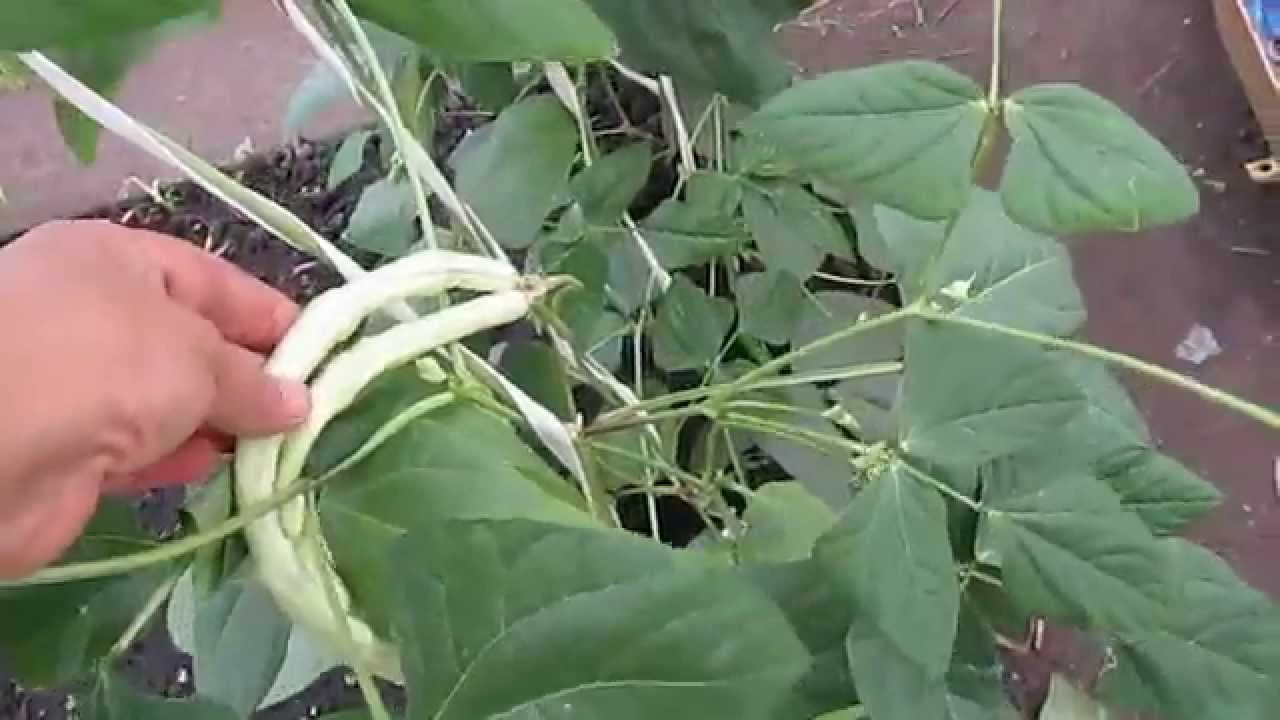
High-quality preparation is the key to a future harvest.
When to start preparation? 2-3 weeks before the expected sowing date.
Soil requirements for beans:
Beans prefer light, loose, fertile soils with good aeration and moisture capacity.
- Soil type: Sandy loam or light loamy soils rich in organic matter are optimal.
- Acidity (pH): 6.0-7.0 (neutral or slightly acidic). Beans grow poorly on acidic soils. If necessary, apply lime in the fall (dolomite flour, lime).
- Organic matter: Beans respond well to organic matter, but not fresh manure. Use well-rotted compost or humus.
Stages of soil preparation in a greenhouse:
- Cleaning and disinfection of the greenhouse: Remove plant residues from previous crops. Wash the greenhouse structures and disinfect (e.g. with copper sulfate solution, special preparations).
- Digging the soil: Digging depth – 20-25 cm (to the depth of a shovel blade).
- Fertilizer application (per 1 m²):
- Organic: 3-4 kg of rotted compost or humus.
- Minerals:
- Superphosphate: 30-40 g
- Potassium sulfate or potassium salt: 15-20 g
- Nitrogen fertilizers are not applied in large doses to beans, since they themselves are capable of fixing nitrogen from the air thanks to nodule bacteria on the roots. A small amount (10-15 g/m² of ammonium nitrate) can be applied if the soil is very poor.
- Formation of beds: Optimal width of beds is 80-100 cm, height – 15-20 cm. Distance between beds – 40-50 cm.
- Leveling: Level the surface of the beds with a rake.
Optimal greenhouse conditions for beans:
- Temperature:
- Seed germination: Minimum +10-12°C, optimal +20-25°C.
- Growth and development: Optimum daytime temperature +20-26°C, nighttime +15-18°C. Beans are heat-loving and do not tolerate frost. Temperatures below +15°C and above +30°C inhibit growth.
- Lighting: Beans are light-loving, they need a full day of light (at least 10-12 hours). In the greenhouse, provide maximum access to light.
- Ventilation: Regular ventilation is necessary to prevent overheating, reduce excess humidity (prevention of fungal diseases) and ensure pollination (for some varieties).
Sowing bean seeds
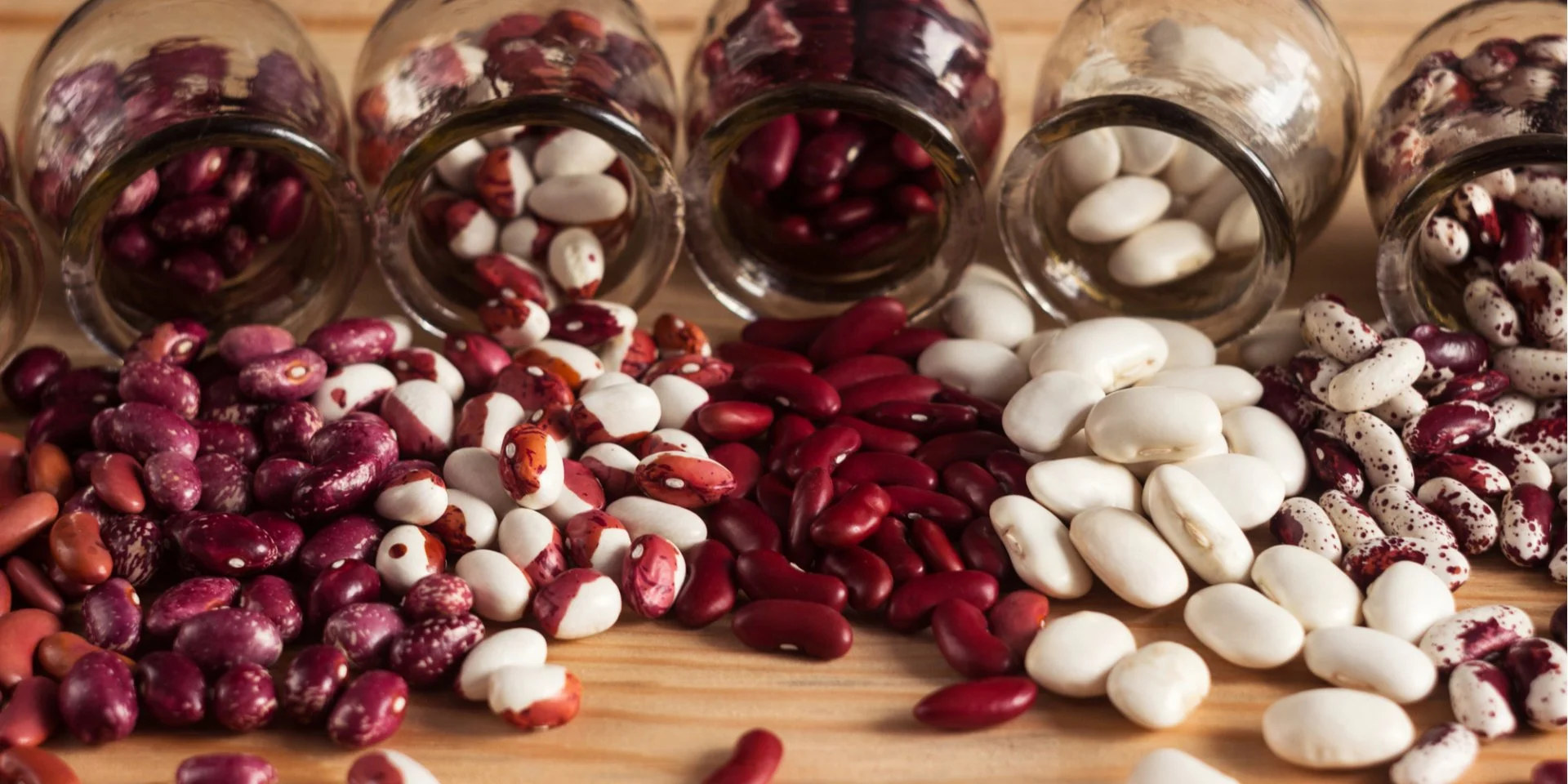
When to plant beans in a greenhouse?
Sowing times depend on the type of greenhouse and climatic conditions:
- In unheated greenhouses: Late April – early May, when the soil at a depth of 10 cm warms up to +12-14°C and the threat of severe nighttime cold spells has passed.
- In heated greenhouses: You can start sowing from the end of March – beginning of April or even earlier if it is possible to maintain the optimum temperature. For conveyor harvesting, you can sow at intervals of 2-3 weeks.
Preparing seeds for sowing:
- Calibration: Select large, healthy seeds without damage.
- Checking for germination: If the seeds are old, carry out a test sowing.
- Soaking: To speed up germination, soak the seeds in warm water (+25-30°C) for 12-15 hours (no more, so they don’t suffocate). It is advisable to change the water every 3-4 hours. You can add a growth stimulator (“Epin”, “Zircon”).
- Treatment (if necessary): If there is a risk of disease, the seeds can be treated in a weak solution of potassium permanganate (1 g per 100 ml of water) for 15-20 minutes, then rinsed.
Sowing technique:
Beans are sown directly into the soil.
- Cutting grooves or holes:
- For bush varieties: Furrows 3-5 cm deep.
- For climbing varieties: Make holes 4-5 cm deep around the supports.
- Sowing scheme:
- Bush beans:
- Between rows: 40-50 cm.
- Between plants in a row: 10-15 cm.
- Climbing beans:
- Around the supports (stakes, trellises) sow 5-7 seeds per hole.
- Distance between supports: 50-70 cm.
- Bush beans:
- Watering the furrows/holes: Before sowing, water the furrows or holes with warm water.
- Seed placement: Place seeds at the desired depth.
- Seed placement: Cover seeds with loose soil and compact lightly.
- Watering: Water the crops carefully.
- Mulching (optional): You can mulch the surface with peat or compost to retain moisture.
Seedlings usually appear in 7-14 days depending on soil temperature.
Caring for beans in a greenhouse
- Watering:
Beans are demanding of moisture, especially during the period of budding, flowering and pod formation.
- Frequency: Water regularly, not allowing the soil to dry out. On average, 1-2 times a week.
- Norm: The soil should be moistened to a depth of 20-25 cm.
- Water temperature: Use warm, settled water (+20-25°C).
- Watering method: Water at the roots, avoiding water getting on the leaves and flowers.
- Important: Lack of moisture leads to the loss of flowers and ovaries, and excess moisture leads to the development of fungal diseases.
- Loosening and weeding:
- Loosening: Regularly loosen the soil between the rows and around the plants (especially after watering) to improve aeration and combat soil crust. The first loosening is when shoots appear, subsequent ones are as needed. Loosening depth is 5-7 cm.
- Hilling: When the plants reach a height of 10-15 cm, they can be lightly hilled for better stability and stimulation of the formation of adventitious roots.
- Weeding: Remove weeds in a timely manner.
- Garter (for climbing varieties):
Climbing beans need support. This can be:
- Individual stakes 1.5-2 m high.
- Trellis (vertical or inclined).
- Grids.
- "Wigwams" made from several stakes.
As the stems grow, they are directed towards supports and tied up if necessary.
- Top dressing:
If the soil is well-fertilized, beans can do without frequent fertilizing.
- First feeding (if necessary): In the budding phase, if the plants are developing poorly. You can use a complex mineral fertilizer with a predominance of phosphorus and potassium (for example, 20-30 g of superphosphate and 10-15 g of potassium sulfate per 10 l of water).
- Second feeding: During the period of mass formation of pods. Use phosphorus-potassium fertilizers or wood ash infusion (1 glass per 10 liters of water).
- Avoid excess nitrogen fertilizers, as this will lead to strong growth of green mass at the expense of fruiting.
- Bush formation (for some varieties):
In tall bush varieties, the tops are sometimes pinched to stimulate lateral branching and more uniform ripening.
- Maintaining the microclimate:
- Temperature: Monitor the temperature in the greenhouse. On hot days, be sure to ventilate to avoid overheating.
- Humidity: Optimum air humidity is 60-75%. Regular ventilation helps control humidity.
- Ventilation: Ensure good air circulation. Open windows and doors slightly.
Disease and pest control
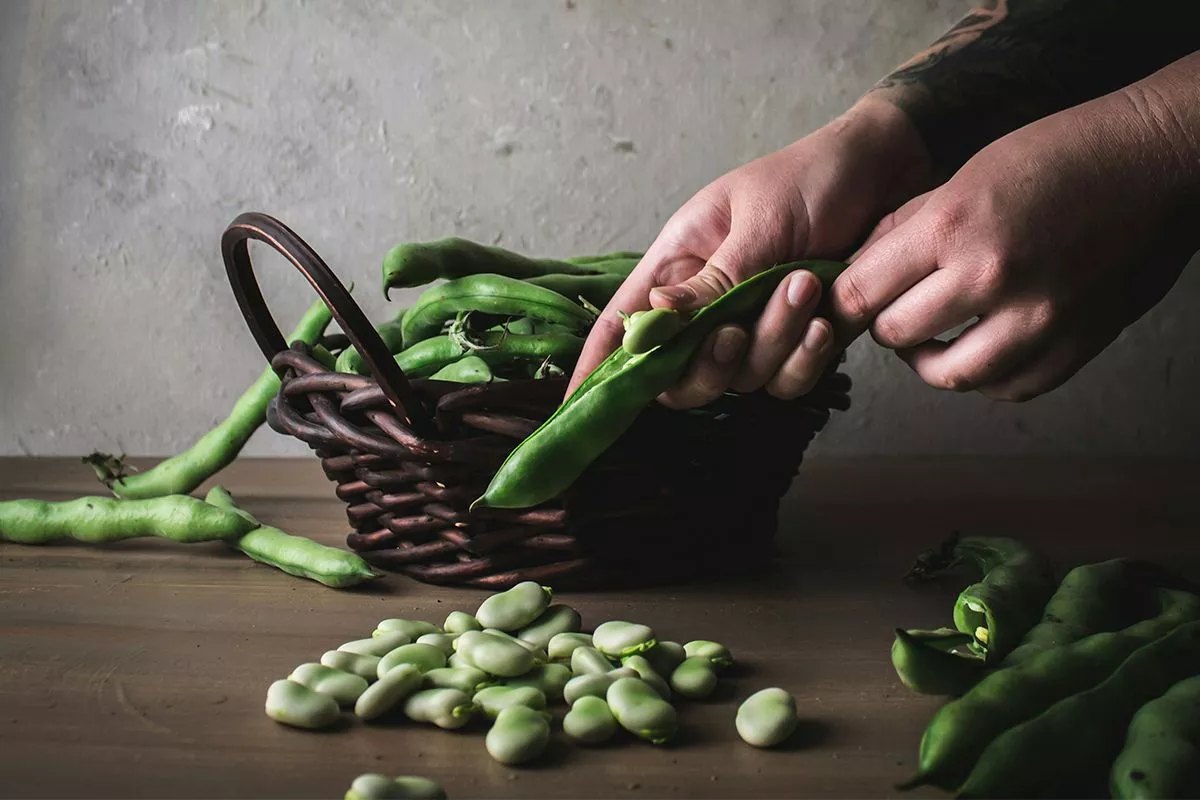
Common bean pests:
- Aphids: Small insects that suck the juice from young shoots and leaves.
- Control measures: Spraying with soap solution, infusions of garlic, tobacco. In case of severe damage – insecticides (Fitoverm, Aktara).
- Spider mite: Particularly active in the dry and hot air of a greenhouse. Forms a fine web on the underside of leaves.
- Control measures: Increase air humidity, spray with water. Acaricides (Fitoverm, Actellic).
- Slugs: May damage young plants and pods.
- Control measures: Manual collection, traps, metaldehyde-based preparations (with caution).
- Bean weevil: Damages beans, especially during storage.
- Control measures: Thorough removal of plant debris. Warming or freezing of seeds before storage.
Common bean diseases:
- Anthracnose: Sunken brown spots appear on leaves, stems and pods.
- Control measures: Crop rotation. Use of healthy seeds. Seed treatment. Treatment with fungicides (“Bordeaux mixture”, “Oxychom”).
- Bacteriosis: Appears as oily spots on leaves and pods.
- Control measures: Crop rotation. Destruction of plant residues. Use of resistant varieties. Treatment with copper-containing preparations.
- Root rot: Caused by soil fungi, especially in waterlogged conditions and on heavy soils.
- Control measures: Good drainage. Avoid overwatering. Loosen the soil.
- Viral mosaics: Light or dark spots and deformation appear on the leaves.
- Control measures: Control of insect vectors (aphids). Use of healthy seeds. Removal of diseased plants.
Preventive measures:
- Crop rotation in a greenhouse.
- Use of high-quality, treated seeds of resistant varieties.
- Disinfection of greenhouse and soil.
- Removal of plant debris and weeds.
- Optimal watering and ventilation regime.
Harvesting and storage
When to harvest beans?
- Asparagus beans (on the shoulder): The pods are harvested in the milky or milky-wax ripeness phase, when they are juicy, tender, and the grains inside are no larger than a grain of wheat. Usually 8-12 days after flowering. Harvesting is carried out regularly, every 2-4 days, preventing the pods from outgrowing (they become coarse and fibrous). Regular harvesting stimulates the formation of new ovaries.
- Shelling beans (for grain): Harvest when the pods begin to dry out and the grains reach full ripeness and harden.
How to harvest beans?
- The pods are carefully pinched off or cut with scissors, being careful not to damage the plant.
- It is better to collect in the morning.
Storage of the harvest:
- Green beans: Fresh pods do not keep in the refrigerator for long, 3-5 days. For long-term storage, they are frozen (pre-blanched), canned or dried.
- Shelling beans: The beans are dried well and stored in a dry, cool, ventilated place in cloth bags or glass jars with tight lids.
Conclusion: Your greenhouse bean oasis is real!
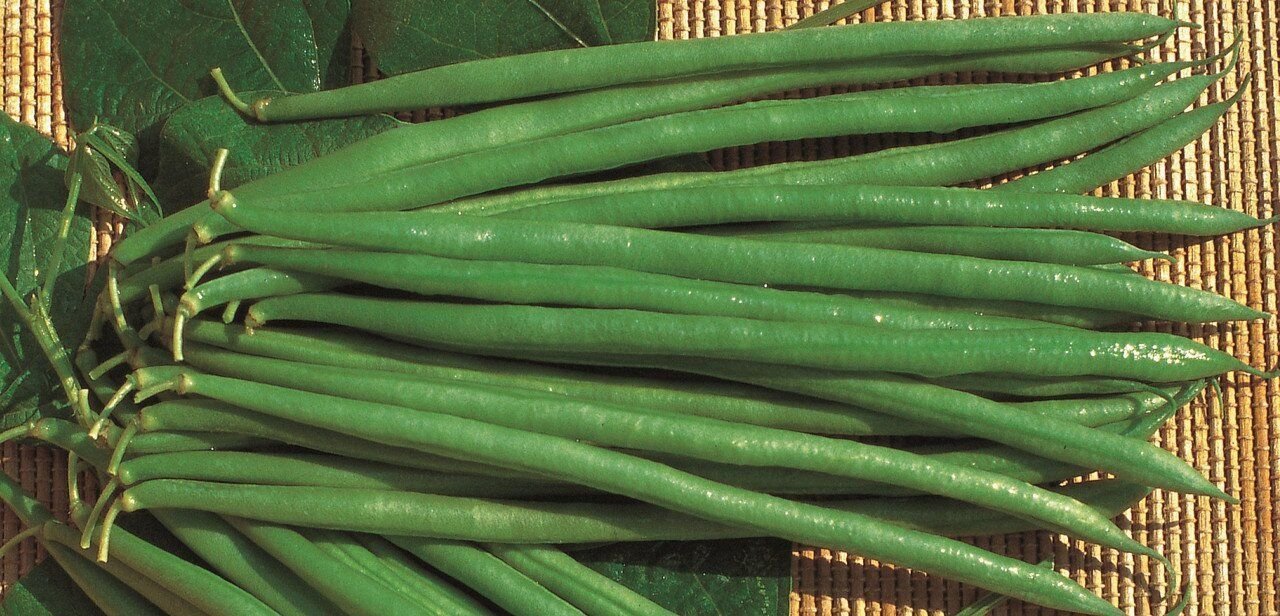
As you can see, growing beans in a greenhouse is not just an agricultural process, but an exciting journey to your own harvest, full of taste and benefits. We have covered all the key stages: from choosing the “right” variety that will delight you in greenhouse conditions and careful preparation of the soil - the foundation of future plant health, to the intricacies of sowing, watering and fertilizing that ensure active growth and abundant fruiting. We have not forgotten about protecting your green pets from insidious diseases and pests, as well as how to properly and timely collect the well-deserved harvest so that each pod brings maximum pleasure.
Remember that success lies in attention to detail and love for your business. Using the knowledge you have gained, you can avoid many common mistakes and turn your greenhouse into a real bean paradise, providing yourself and your loved ones with fresh, environmentally friendly products. May each season bring you joy from the generous gifts of nature, grown with your own hands!





